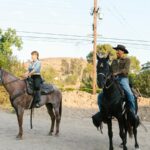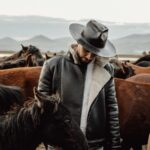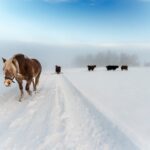The Lipizzaner stallions, with their gleaming white coats and extraordinary athletic abilities, have captivated audiences worldwide for centuries. These remarkable horses represent one of the oldest and most prestigious European horse breeds, tracing their lineage back to the 16th century. Beyond their striking appearance lies a rich history intertwined with European royalty, war, cultural preservation, and an unparalleled training tradition that showcases the highest levels of classical dressage. The Spanish Riding School in Vienna, where these magnificent animals perform their famous “ballet of the white stallions,” stands as a testament to the enduring partnership between humans and horses. This article explores the fascinating journey of the Lipizzaner breed, from its noble beginnings to the intricate training methods that transform these horses into equine artists capable of movements that seem to defy gravity.
Origins of the Lipizzaner Breed

The Lipizzaner breed was established in 1580 when Archduke Charles II of Austria founded the stud farm at Lipizza (now Lipica in Slovenia), giving the breed its name. These horses were specifically bred to create the perfect mount for the Habsburg monarchy and their imperial court, combining the elegance of Spanish horses with the strength of Arabian and Barb bloodlines. The careful breeding program sought to develop horses that possessed both beauty and the intelligence necessary for the complex movements of classical dressage. Six foundation stallion bloodlines established in the 18th and 19th centuries—Pluto, Conversano, Neapolitano, Favory, Maestoso, and Siglavy—continue to define the breed today, maintaining genetic diversity while preserving desired traits.
Physical Characteristics of Lipizzaners

Lipizzaner stallions are instantly recognizable by their compact, muscular build and gleaming white coats, though they aren’t born with this distinctive coloration. Most Lipizzaner foals are born dark brown or black, gradually lightening to their characteristic white or gray coat over a period of 6-10 years—a process that adds to their mystique and historical significance. Standing between 15 and 16 hands high (approximately 60-64 inches at the shoulder), they possess a strong, arched neck, powerful hindquarters, and an elegant head with expressive eyes. Their proportions reflect the perfect balance between strength and refinement, with sturdy legs capable of supporting their weight during the demanding airs above the ground. This unique combination of physical attributes makes them ideally suited for the athletic demands of classical dressage while maintaining an appearance of effortless grace.
The Spanish Riding School in Vienna

The Spanish Riding School in Vienna stands as the oldest riding academy in the world, dating back to 1572 when Emperor Maximilian II began the Habsburg tradition of Spanish horses. Housed in the magnificent Winter Riding School in the Hofburg Palace, the baroque riding hall designed by Josef Emanuel Fischer von Erlach provides a fittingly opulent setting for the performances of these imperial horses. The name “Spanish” refers not to the nationality of the riders but to the Spanish horses that formed the original breeding stock of the Lipizzaner. For over 450 years, this institution has preserved the Renaissance tradition of classical horsemanship in its purest form, passing techniques from rider to rider through direct instruction rather than written texts. The school remains one of Vienna’s most cherished cultural institutions, continuing to train horses and riders in methods virtually unchanged since the Renaissance.
The Rescue of the Lipizzaners During World War II

One of the most dramatic chapters in Lipizzaner history occurred during the final days of World War II, when the breed faced potential extinction. As the Soviet army advanced toward Vienna in 1945, Colonel Alois Podhajsky, director of the Spanish Riding School, feared for the safety of his precious stallions and the broodmares evacuated to Czechoslovakia. In a remarkable act of cultural preservation, U.S. General George S. Patton—himself an Olympic equestrian—authorized Operation Cowboy, a mission to rescue the Lipizzaners from behind enemy lines. American soldiers, led by Colonel Charles Reed, successfully evacuated 375 horses, including Lipizzaners from various breeding farms, saving the breed from certain destruction. This extraordinary wartime collaboration between former enemies to protect a living cultural treasure was later immortalized in Disney’s 1963 film “Miracle of the White Stallions,” bringing the story of the Lipizzaners’ rescue to worldwide attention.
The Philosophy of Classical Dressage

The training of Lipizzaner stallions is guided by principles established in Xenophon’s treatise “On Horsemanship” from 400 BCE and refined during the Renaissance by masters like Antoine de Pluvinel and François Robichon de la Guérinière. At its core, classical dressage represents not just a performance art but a philosophy that respects the natural movements and intelligence of the horse while developing its strength, balance, and flexibility through systematic training. Unlike modern competitive dressage, the classical tradition practiced at the Spanish Riding School emphasizes the horse’s mental and physical development through a process that can take up to ten years to complete. The relationship between rider and horse is paramount, with communication achieved through nearly imperceptible aids rather than force or coercion. This approach produces not only beautiful movements but also horses that remain sound and willing well into their twenties—a testament to training methods that enhance rather than exploit their natural abilities.
The Training Progression of Lipizzaner Stallions

The education of a Lipizzaner stallion follows a carefully structured progression that begins when the horse is around four years old, considerably later than most modern equestrian training. The initial phase, called remontenschule (novice school), focuses on developing basic obedience, balance, and forward movement while the young stallion carries only a saddle and no rider. Once the horse accepts the rider, training advances to the kampagneschule (campaign school), where the stallion learns collection, lateral movements, and the beginnings of the haute école exercises that form the foundation of all advanced work. The most talented and physically capable horses then progress to the haute école (high school), mastering complex movements like passage, piaffe, and the one-tempi flying changes. Only a select few stallions—perhaps one in a hundred—demonstrate the strength, coordination, and courage necessary to perform the final phase: the “airs above the ground,” where the horse leaves the earth entirely in movements originating from battlefield maneuvers.
The Famous “Airs Above the Ground”

The most spectacular elements of Lipizzaner performances are the “airs above the ground,” a series of movements where the horse launches itself into the air in what appears to defy gravity. The capriole, considered the most difficult of these movements, involves the stallion leaping into the air and, at the height of elevation, kicking out powerfully with its hind legs—a movement originally designed to dispatch foot soldiers in battle. The courbette requires the horse to balance on its hind legs and jump forward several times without touching the ground with its forelegs. In the levade, the stallion maintains a haunches-lowered position at a 45-degree angle to the ground, requiring extraordinary strength in the hindquarters and perfect balance. These movements represent the culmination of years of careful conditioning and trust between horse and rider, as they place enormous physical demands on the horse and must be practiced with strict limitations to prevent injury.
The Role of the Riders

Becoming a rider at the Spanish Riding School requires extraordinary dedication, with an apprenticeship system that can span ten to fifteen years before achieving the rank of Rider. Young riders typically begin their training between the ages of 15 and 22, starting as Élèves (students) who spend years learning stable management, horse care, and basic riding techniques before ever mounting a Lipizzaner stallion. Those who demonstrate sufficient talent and dedication progress to become Assistant Riders, then Riders, and finally Chief Riders—a position achieved by only a handful of equestrians in each generation. The riders train without stirrups to develop a deep, independent seat that allows for nearly invisible communication with their mounts. Traditionally a male-only institution, the Spanish Riding School accepted its first female riders in 2008, marking a significant evolution in this centuries-old tradition while maintaining its exacting standards.
The Music and Choreography of Performances

The performances at the Spanish Riding School are set to classical music, primarily compositions by Mozart, Strauss, and other Austrian composers, creating a perfect harmony between movement and sound. The choreography of these performances follows traditional patterns established centuries ago, with each program carefully structured to showcase different aspects of the horses’ training and abilities. The “quadrille” remains the highlight of every performance—a ballet performed by eight Lipizzaner stallions moving in perfect synchronization through complex patterns that require extraordinary precision from both horses and riders. The musical selections are not merely background but integral to the performance, with movements timed to match the rhythm and emotional quality of the music. This marriage of equine athleticism, historical tradition, and classical music creates a multi-sensory experience that transcends ordinary equestrian display, elevating the performances to a genuine art form that resonates with audiences regardless of their equestrian knowledge.
The Special Equipment and Tack

The equipment used for training and performing Lipizzaner stallions reflects both tradition and functionality, with every element carefully designed for the horse’s comfort and the rider’s effectiveness. Riders use a traditional dressage saddle with a deep seat and long, straight flap that allows for the precise leg position necessary for subtle communication. The double bridle, featuring both a bradoon and curb bit, enables refined rein aids that distinguish between directing the head position and controlling the entire body. For performances, the stallions wear the traditional shabrack—an ornate white saddle cloth embroidered with the imperial double-headed eagle—and riders don the formal uniform of brown tailcoats, bicorn hats, white buckskin breeches, and top boots. This equipment has remained largely unchanged for centuries, representing a tangible link to the historical origins of the school while still serving the practical needs of classical dressage.
Breeding and Selection Process

The breeding program for Lipizzaners follows stringent selection criteria that balance preservation of the historic bloodlines with careful attention to conformation, movement quality, and temperament. While the Spanish Riding School in Vienna showcases the stallions, the state stud farm at Piber in Styria, Austria, is responsible for breeding and raising the next generation of Lipizzaners. Mares are selected for their strong bloodlines and correct conformation, with particular attention to soundness and quality of movement. From each year’s crop of approximately 40 foals, only the most promising colts—around seven or eight—will be selected to begin training at the Spanish Riding School. Young stallions spend their first three to four years developing naturally in mountain pastures, building strong bones and natural balance before formal training begins. This careful breeding and selection process, combined with years of patient development, ensures that only horses with the physical and mental attributes necessary for the demands of classical dressage enter the performance program.
Global Influence and Modern Challenges

While the Spanish Riding School remains the epicenter of Lipizzaner tradition, the breed’s influence extends globally through breeding programs in countries including Croatia, Hungary, Italy, and the United States. American audiences may be familiar with the “Lipizzaner Stallions” touring show, which, while not directly affiliated with the Spanish Riding School, has introduced millions to these remarkable horses since its founding in 1970. The preservation of the Lipizzaner breed faces modern challenges, including maintaining genetic diversity within a relatively small population and balancing historical breeding objectives with contemporary equestrian needs. Conservation efforts gained urgency after genetic testing in the 1990s revealed the breed to be among the most endangered domestic horse populations in the world. International cooperation among breeding facilities has become essential to maintain the health and integrity of the breed, with careful genetic management ensuring these living cultural treasures continue to thrive for future generations.
The Cultural Legacy of the Lipizzaners

The Lipizzaner stallions represent far more than exceptional horsemanship—they embody a living cultural heritage that spans centuries of European history. In 2015, UNESCO recognized classical horsemanship at the Spanish Riding School as an Intangible Cultural Heritage of Humanity, acknowledging its unique cultural significance. The survival of these traditions through wars, political upheavals, and changing equestrian fashions speaks to their profound cultural importance and the dedication of generations of horsemen who served as stewards of this knowledge. Beyond their performances, Lipizzaners serve as ambassadors of cultural diplomacy, having performed for world leaders and royal families throughout their history. Their continuing appeal in our modern, technology-driven world reminds us of the enduring power of the relationship between humans and horses, demonstrating that some traditions remain relevant and inspiring precisely because they connect us to values that transcend time—patience, discipline, partnership, and the pursuit of harmony through dedicated practice.
Conclusion

The story of the Lipizzaner stallions is one of remarkable resilience, artistic achievement, and the preservation of living history. From their origins in the imperial courts of Europe to their continued performances at the Spanish Riding School, these horses represent one of humanity’s most significant cultural partnerships with animals. The training methods developed over centuries honor the horse’s natural abilities while creating a spectacular display of equine artistry that continues to captivate audiences worldwide. As we watch these white stallions perform their intricate movements with apparent effortlessness, we’re witnessing not just a display of horsemanship but the culmination of 450 years of careful breeding, dedicated training, and passionate preservation. In an era of constant change and technological advancement, the Lipizzaner tradition reminds us that some connections—like that between human and horse—retain their power to inspire wonder across generations.







